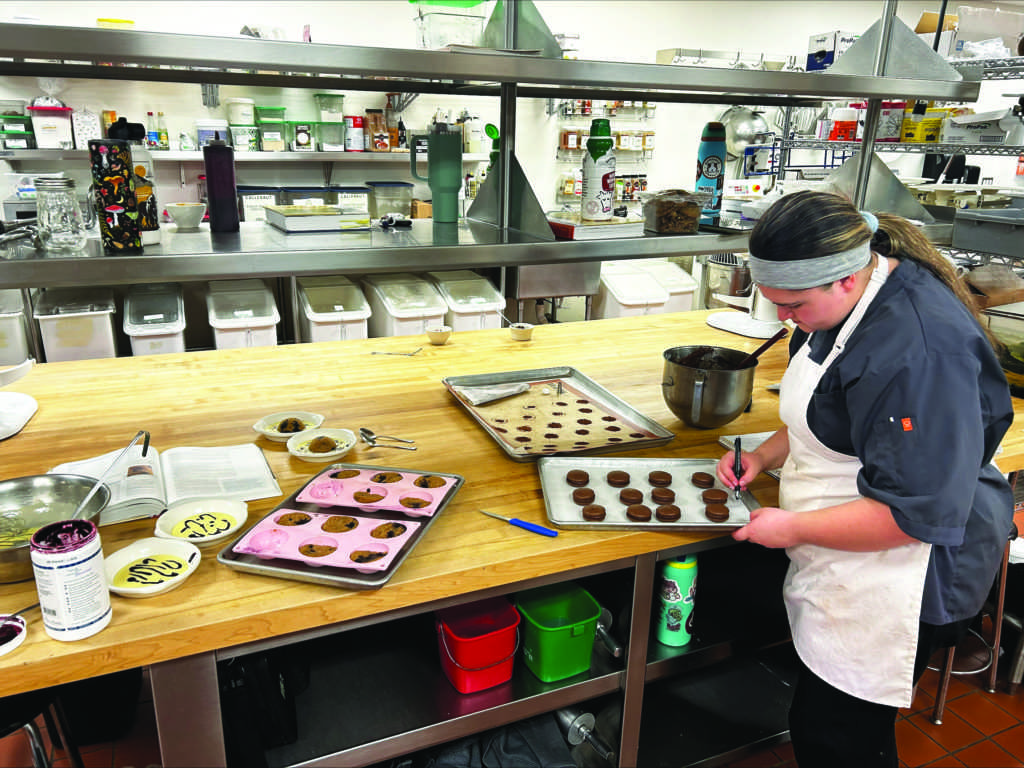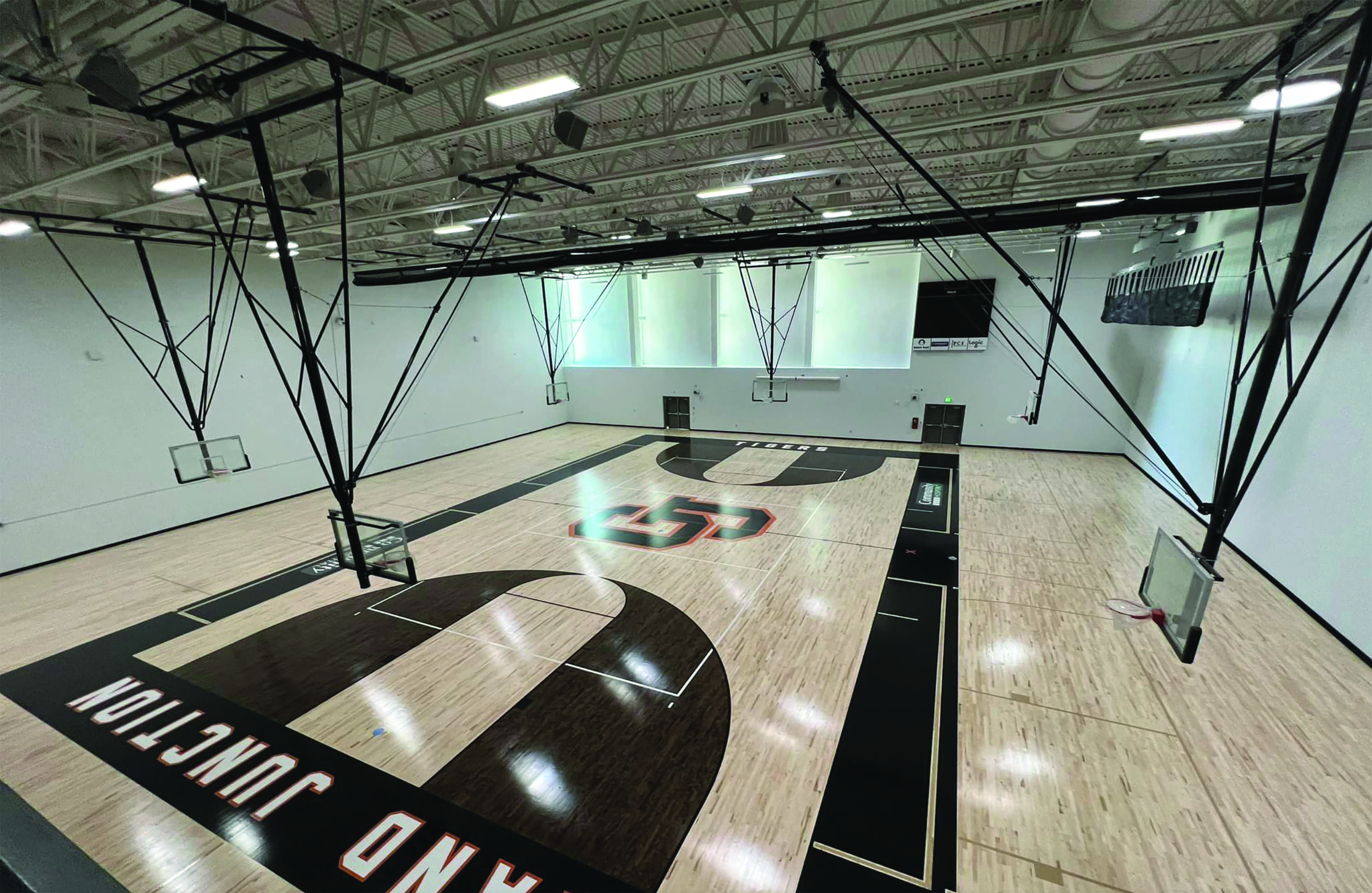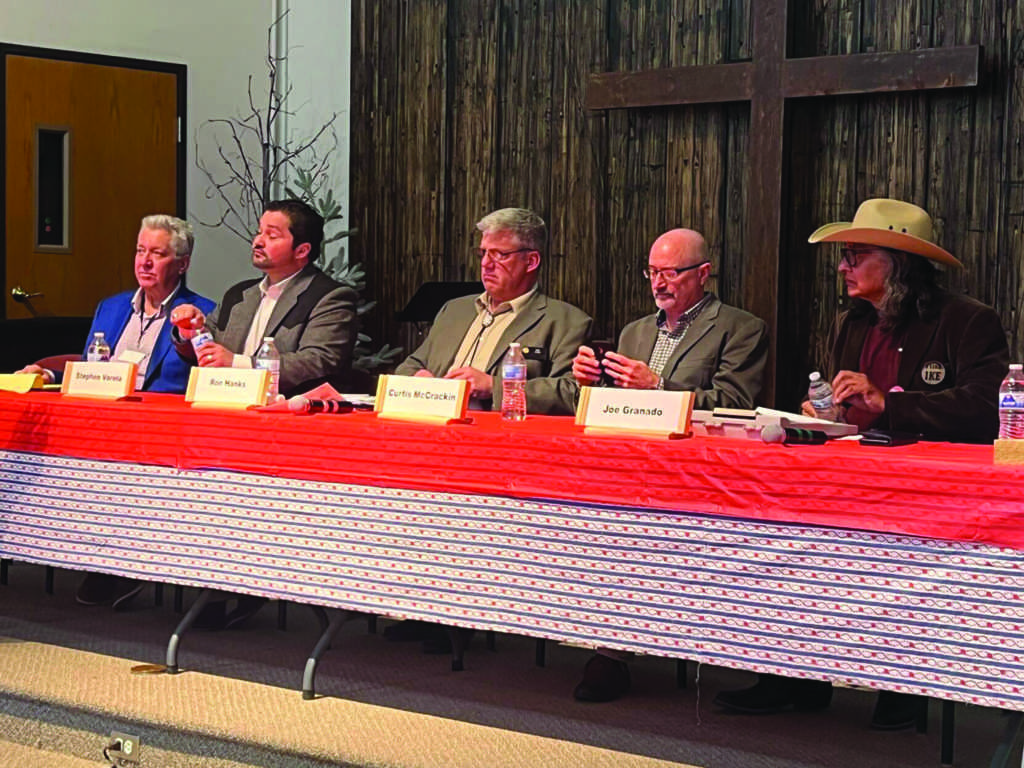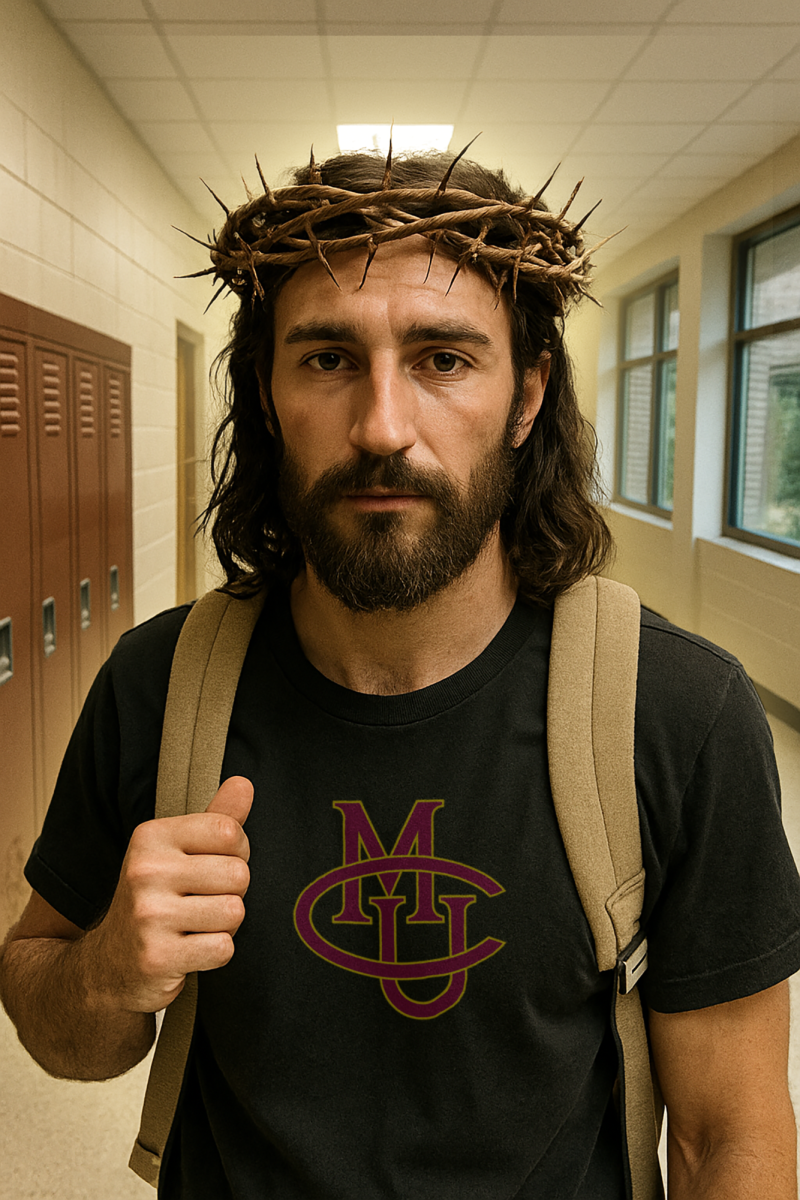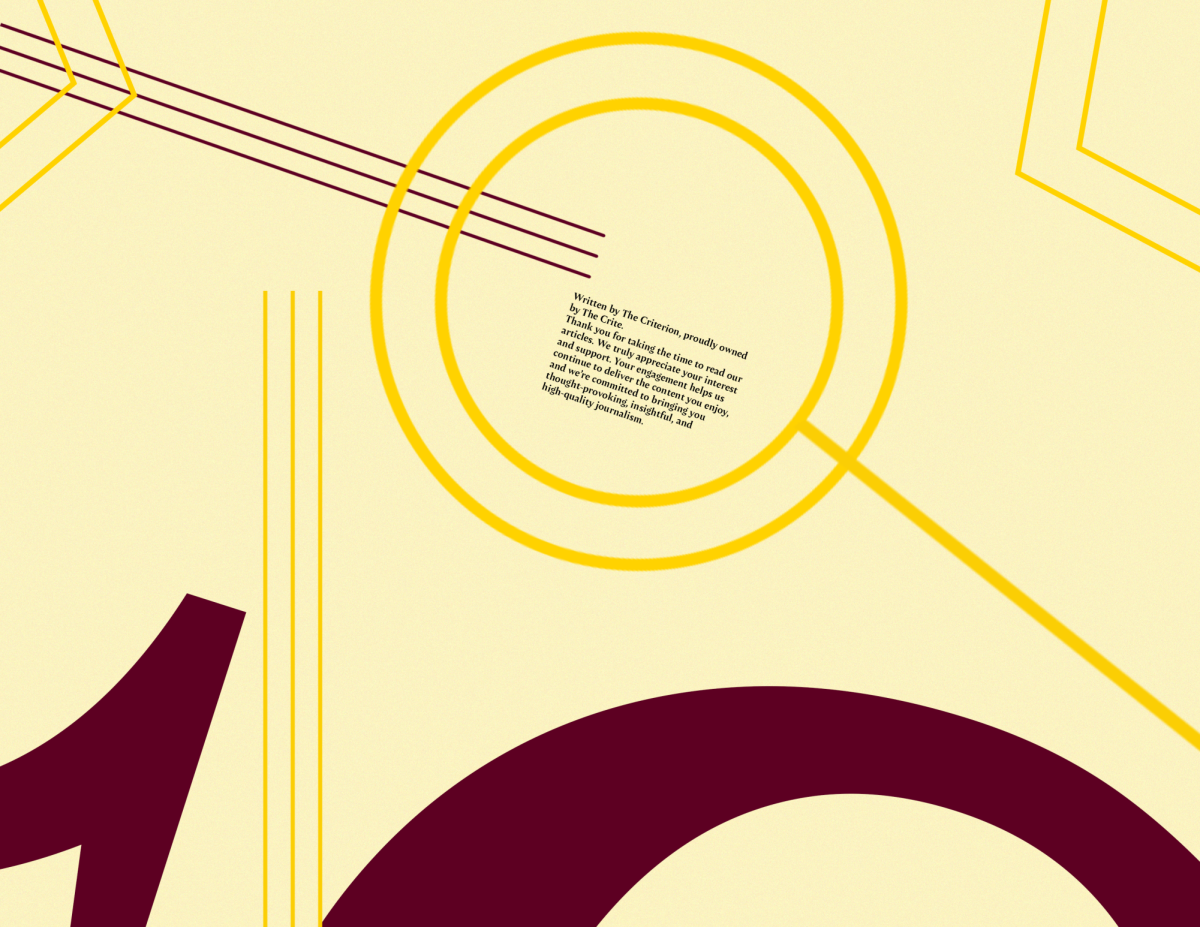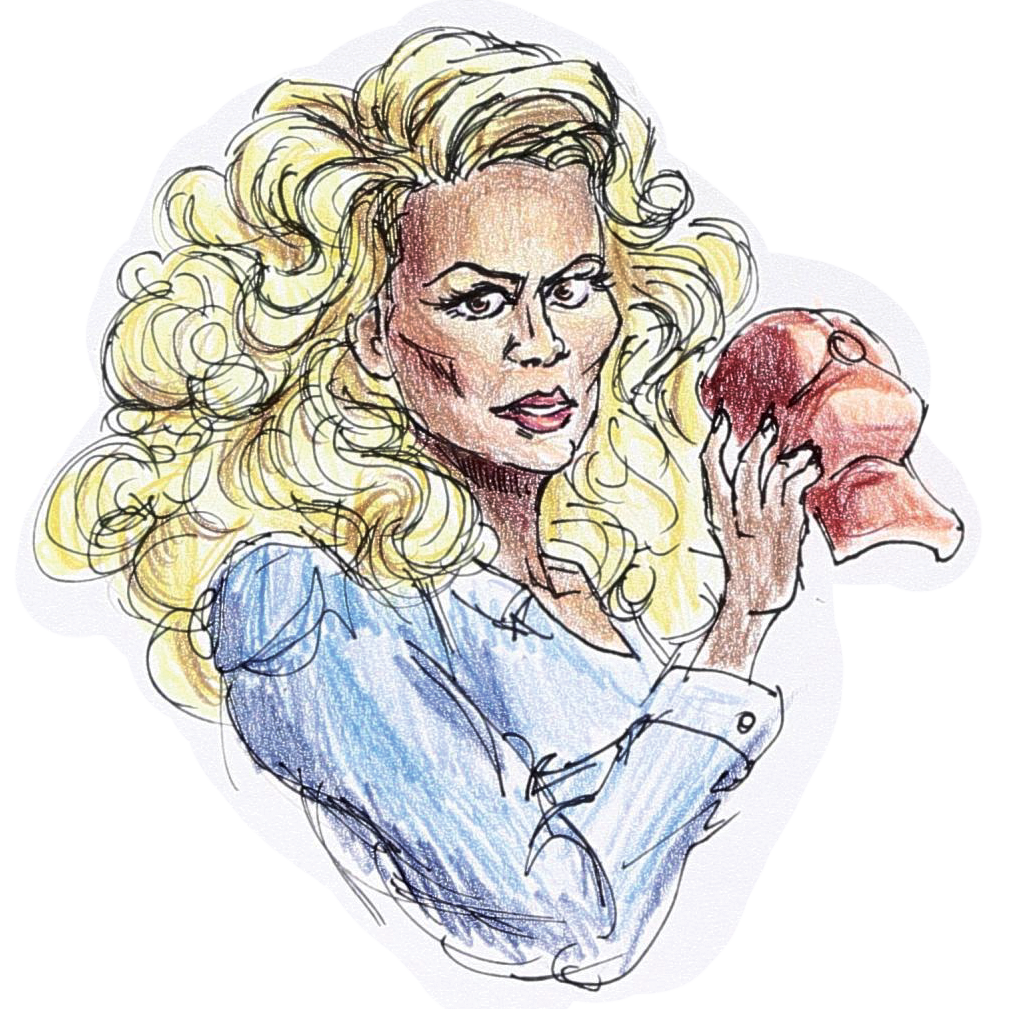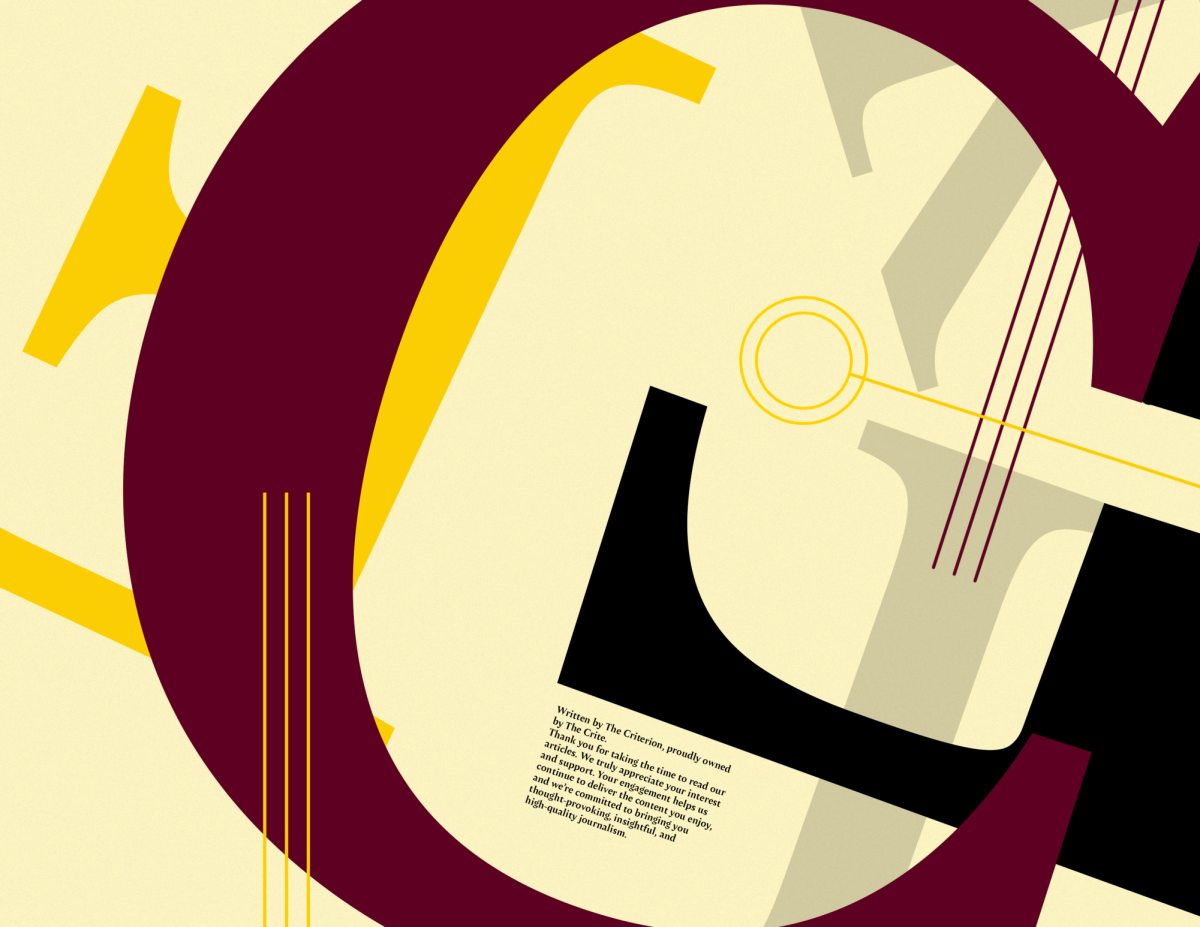Graphics by Breanda Petsch
RateMyProfessors.com is a website that students can use to rate their professors, among other things. There are thousands of reviews on the site, and can be sorted through by difficulty, highest rating, and others. The professors featured in this article had the highest ratings out of the most reviews.
Based off of RateMyProfessors.com (as of the time of writing), Colorado Mesa University’s (CMU) highest rated professors with the most reviews are Kate Belknap (rated a 4.9/5.0 from 43 reviews), Shay West (4.4/5.0 from 44 ratings), Stephanie Matlock-Cooley (4.3/5.0 from 70 ratings), and Timothy Winegard (4.0/5.0 from 54 ratings).
There are thousands of reviews on the site, where students can rate their professors at their respective universities, and can be sorted through by difficulty, highest rating, and others. The professors featured in this article had the highest ratings out of the most reviews.
“I got into teaching because I wanted to have an impact on people in the same way many of my teachers had on me,” English Professor Kate Belknap said. My goal always is to meet my student’s needs, first and foremost. And I am grateful that students recognize and respond to that.”

On her rating:
“[I feel] surprised, frankly. There are a lot of really good professors at CMU and I would not have expected myself to be near the top. I find it very humbling to be rated so high by my students.”
On RateMyProfessor:
“I think it is a very good representation of how students feel about professors. However, there is so much behind the scenes work that goes into being a professor that students are not aware of and thus cannot comment on. There’s nothing wrong with that, but students don’t always know the entirety of what the job entails and may end up forming an incomplete picture of a specific professor.”
Professor Shay West seemed to harbor similar feelings on being named one of the top four professors at CMU according to RateMyProfessor.com.
Belknap and West felt flattered by their ratings, but shared a bit of skepticism regarding the actual validity of the ratings, similar to Winegard.
“I have never visited the site so I’m not sure about the accuracy. It would be interesting to see how rankings on that site are similar to or different than the evaluations students do every semester,” West said.

On her rating:
“It’s pretty flattering to know that students think highly enough of me that they take the time to rate my performance on an off-site website.”
On RateMyProfessor:
“I have heard from students and faculty that some of the reviews don’t relate to particular courses but rather to how attractive the professor is, which is one of the reasons I never visited the site. I’m not sure if this ranking still happens but I would rather have my effectiveness as a professor be ranked on my ability to teach the material and not on looks.”
“I’m not sure how accurate they are or not–both good and/or bad ratings,” Winegard said. It was clear that all four shared a similar level of skepticism in regards to the website accuracy.

On his rating:
“I don’t really know [how I feel] to be honest. I suppose that it could be a form of validation of how much I love my job and enjoy sharing my passion for history with students at CMU. I have never been on the site nor looked at it. I am not sure what the ratings mean or if they are a fair or accurate representation of any professor.”
On RateMyProfessor:
“I’m not sure how accurate they are or not – both good and/or bad ratings.”
Accuracy was one of the primary concerns expressed by the professors. While West’s skepticism was attributed to rumors that the website bases its ratings off of physical attractiveness, Matlock saw another flaw in the accuracy of RateMyProfessors.com.
For every student that bothers to go onto Rate My Professor to complain, I imagine there are 10 who would actually be happy with that professor or feel the course was worthwhile, or visa versa. But the numbers are so small in Rate my Professor, that it is nearly useless overall to gain a true perspective of that professor,” Matlock said.

On RateMyProfessor:
“The problem with it is that you have a sample size of 1 or 2 [students] per semester. It is fairly useless for gaining a full perspective of the professor. You have the outliers on the bell curve who are either very happy with the professor and course, or very unhappy.”
I am glad that students overall feel like I am trying to teach them well and make them feel like their time spent in my class was worthwhile, but I think the saying ‘you can please some of the people all of the time, you can please all of the people some of the time, but you can’t please all of the people all of the time,’ is the most fitting.”
Given the apparent doubtfulness from the professors towards the website’s precision, it was safe to say that they didn’t adjust their teaching style based off of the ratings they received.
“I have not (adjusted my teaching style based on the website’s ratings). I strive to be the best teacher that I can be, and to that end I make sure to do what I expect of myself. Fortunately, students seem to agree that it is working,” Kate Belknap said.
“I base changes to courses on the evaluations given at the end of the semester. I read through the comments and make note of helpful critiques that could potentially make the course more beneficial for future students,” Shay West said.
“I absolutely do not adjust my teaching based on the ratings, that would be crazy,” Stephanie Matlock said.
The small sample size and potential for bias casts doubt on the credibility of the website.
“. . . a point I would make, is that students have no way to know if a professor has a personality that matches their style of teaching, or teaches in a style that matches the student’s style for them to learn. When I was in college many years ago, when we went to register, the student government would hand out a grade book for professors that gave students an indication of what the professor was like. A student judging a professor for another student type manual. That would be useful if you actually had a larger sample size than 1 student per semester. Students here at CMU rely on word of mouth from other students in dorms or from friends, to take that professor for a class, and yet the professor for one person may not fit for another,” Matlock said.






